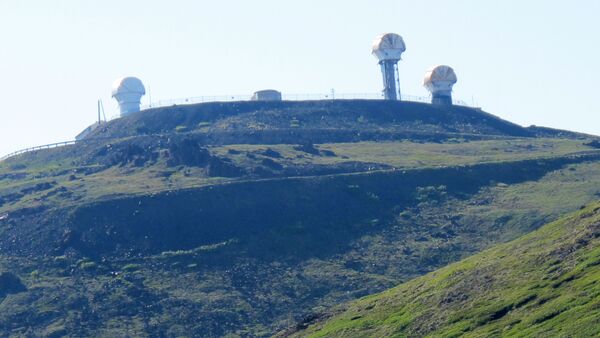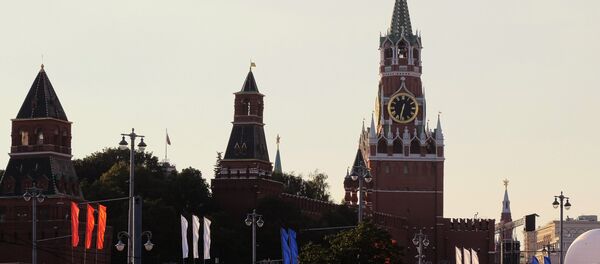“Cold War ended on Christmas day 1991. We like to say that the site summit is both the symbol of victory, a symbol of peace and a symbol of hope,” Renkert said at the 150th anniversary of Alaska Treaty of Cession.
He added, referring to the current tensions between Russia and the US, that “during these tough times it’s important to remember that things were worse at one point.”
In 2007, Renkert has co-founded Friends of Nike Site Summit in an effort to preserve the most physically intact Nike Hercules missile site as a monument to Cold War veterans and tourist attraction “to educate present and future generations about the Cold War,” the summit’s brochure states.
Renkert, who was brought up in Alaska amid the hysteria of the Cold War, remembers regular “duck and cover” nuclear drills in school. “All us baby boomers grew up under a shadow. The fear was real,” he says. And with its proximity to Russia, Alaska had strategically become the front line of defense of the North American homeland.
“Our continental defenses can be no stronger than our Alaskan defenses,” soon-to-be US president and at the time senator Lyndon Johnson said in 1951. “The security of every American home begins in the snows of Alaska.”
Built on top of a mountain at Arctic Valley, the Alaskan missile site was operational from 1959 to 1979. Since then it has been repeatedly scheduled for demolition. With the partnership of a non-profit organization the AK Association for Historic Preservation and the support of local community, Friends of Nike Site Summit has raised over $600,000 and has managed to preserve and restore six buildings, including three sentry stations, dog kennels, guided missile maintenance building and launch control building. Today Renkert and a group of other volunteers organize guided tours throughout the site.
Hundred and fifty years ago the United States have purchased Alaska from the Russian Empire for $7.2 million. The historic event, ridden with myths, anecdotes and controversies, provides a distinct perspective into the complex relationship the two countries have developed over the last century.
“It’s one of the few places in the world where you can see two countries, two continents, two hemispheres, two seas, two oceans and two days,” Renkert said, standing at the Anchorage Museum exhibition dedicated to the 150th anniversary of Alaska purchase, and looking at the enlarged map area of Bering Strait, the narrowest point between Russia and Alaska.
“You can see United States and Russia, you can see North America and Asia, you can see Western hemisphere and eastern hemisphere, you can see Chukchi sea to the north and Bering sea to the south, Arctic ocean to the north and Pacific ocean to the south, and you can see today and tomorrow,” Renkert said.
The museum exhibition features the original Treaty of Cession, signed on March 30 1867, $7.2 million check for the purchase issued in August of the same year, and the famous painting by Emanuel Leutze “Signing of the Alaska Treaty.”
Alaska, with its Russian past and US present, the land which to this day is shared by Russian Old Believers and US citizens, becomes this one of a kind hybrid where the two cultures intricately converge. But perhaps the most eloquent expression of the complex relationship Russia and the States have developed over the last 150 years is summed up at the Anchorga museum exhibition dedicated to the cessation. “Since the US purchased Alaska from Russia in 1867, the two countries have been connected by history, religion, and climate, while divided by politics, language, and even time – today in Alaska is tomorrow in the nearest part of Russia,” one of the exhibition walls reads.
Never miss a story again — sign up to our Telegram channel and we'll keep you up to speed!




